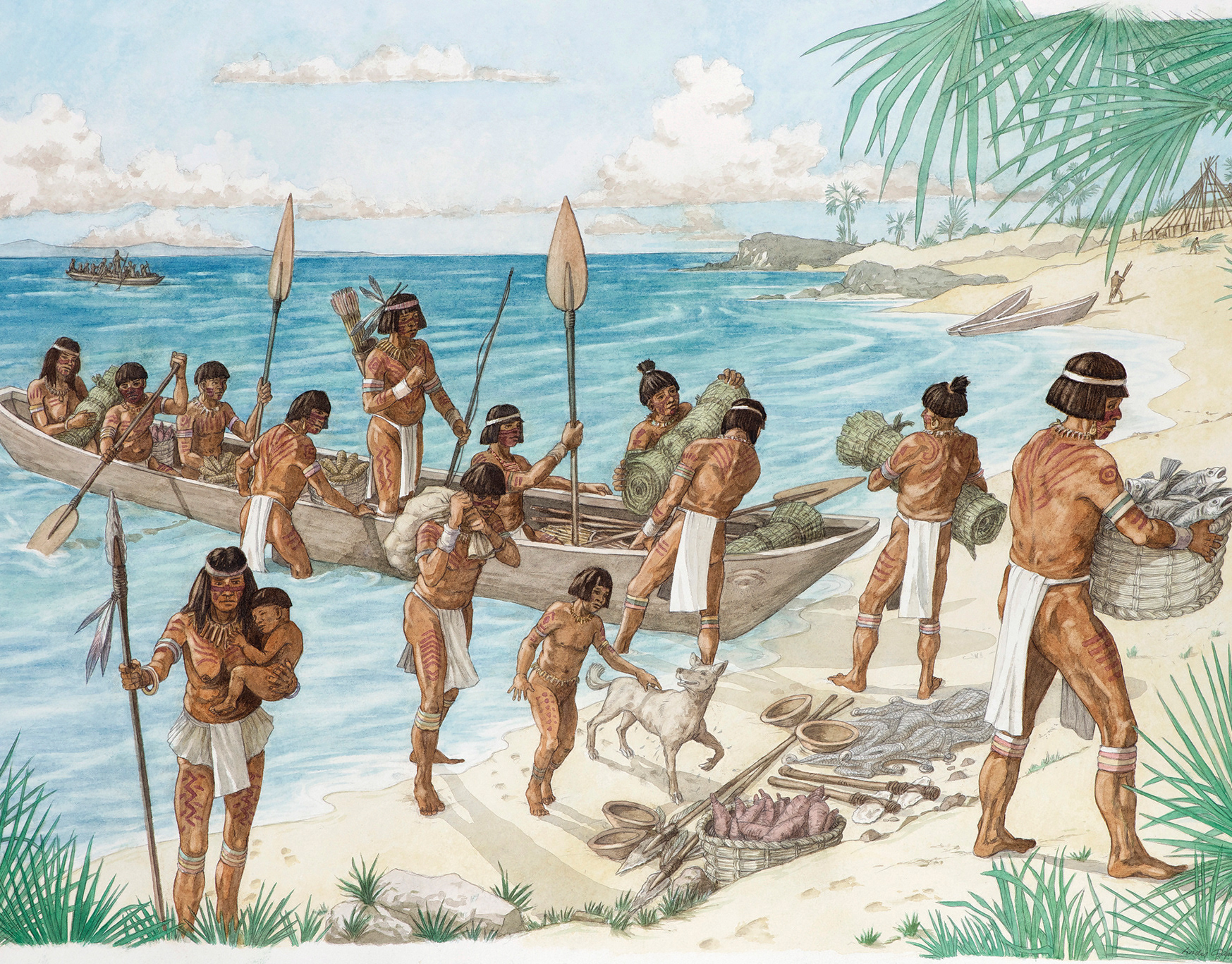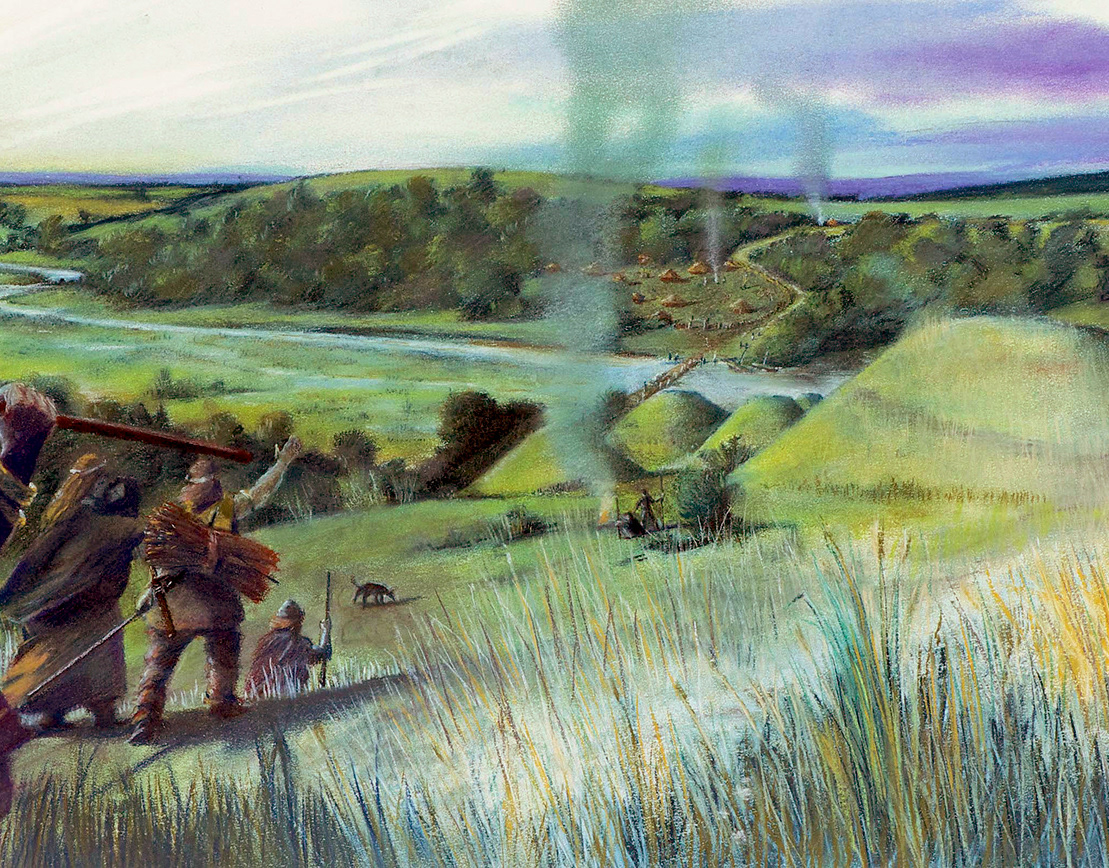Making Imbrex roof tiles in a Roman workshop
A Roman masseur and 'victim'
An Ordo council meeting in progress and a Syrian centurion
Repurposed Roman bath house as a Saxon grain drier
A Saxon warrior and his horse, used to illustrate an etched panel at Lakenheath Air Base as part of the Tour-in-Time history trail.
ABOVE TOP: Section through a WWI British dugout captured from the enemy and adapted to face the opposite direction. Note the blocked up entrance originally used by the Germans. ABOVE BOTTOM: Section through a disguised WWI German block house hidden inside a ruined farm building and reinforced with thick concrete walls and ceiling.
The early phase of development of Barcombe Romano-British 'villa' site in c40 to c50 AD when it still contained iron age round houses with a ditch around. The proximity to the Bronze Age barrow, in the foreground, remained a feature through all its phases.
The second phase of Barcombe Romano-British villa near Lewes, in transition with the introduction of a rectangular building in the Roman style. As it might have looked in 150AD, post the Claudian conquest, of 43AD.
The third phase of Barcombe Romano-British villa near Lewes, as it might have looked in 250AD, when it had become fully Romanised with two stories, a barn and a bath house nearby. All 3 phases of the villa site are drawn from archaeological evidence, and personal digging experience. It is possible that it can now be interpreted as a mansio for boarding travellers and workers, as it was subsequently thought that the bath house was too large for a single villa dwelling. Since excavation, a large Roman settlement has been discovered to the east, across the the River Ouse, (see Bridge Farm excavations by the Culver Project), which promises to be a major trading hub for the area, through much of the Roman occupation, as it stands on the junction of two Roman roads, the E-W Greensand Way and the N-S London-Lewes road, as identified by Margary.
The above images were prepared for enlargement onto 2M high panels for a prehistoric display at Newhaven Fort, Sussex. They include, Homo Heidelbergensis figure and a scene with a group butchering a deer after a hunt, Bronze Age casting of socketed axes under Mt Caburn which can be seen in the distance, Iron Age ritual burial on top of Mt Caburn, Sussex, a standing figure of an Iron Age warrior and a scene of Mesolithic hunter gatherers near an estuary on the Sussex coast.
Large wall panel illustration for the Prehistoric Sussex display at Newhaven Fort - Mesolithic hunter-gatherer community somewhere along the south coast of Sussex, c7000 BC
Large wall panel illustration for the Prehistoric Sussex display at Newhaven Fort - A group of Homo Heidelbergensis people (Box Grove Man), somewhere along the south coast of Sussex, c540,000 BC
Bronze Age craftsmen casting axe heads in moulds from the molten copper and tin mixture. Possibly near Mt Caburn and showing fishing in the Ouse Estuary an, Charcoal burning, crushing the green malachite to extract copper and a farmer ploughing with an ard in the background.
Iron Age tribal people burying votive offerings on the summit of Mount Caburn. Also for the large wall displays at Newhaven Fort. See also aerial Views section for a view of Caburn from above in the same period.
Above: stages in the development of a chapel of ease into a dwelling.


